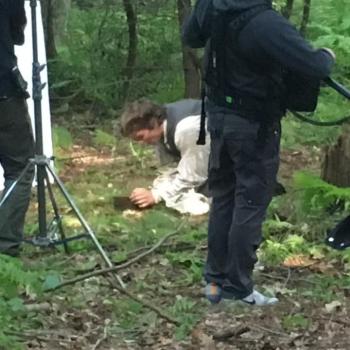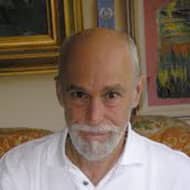 By Gary Gach
By Gary Gach
In cherished sacred texts, it is recorded that, when asked, "What time is it?" sage American baseball star Yogi Berra would reply, "You mean, like, now?"
These days, the "power of now" is a popular frame of reference. As comic Mel Brooks urges, "Now thyself!" Buddhism certainly doesn't claim any exclusive lock on this -- but its teachings are present-tense, real-time, radically so. We might thus ask where does the future fit in, in Buddhism? (It's quite nice of course to even consider having a future, a brand-new 24 hours, every morning.)
Looking to other creeds, asking about the future of Judaism, for instance, wouldn't be a stretch as it's grounded in prophetic, messianic traditions. But Buddhism? Well, it's a misconception to treat Buddhism (and the East in general) as content to abide in a generalized flow. Water flows somewhere. One key lesson Eastern eyes can teach us is how to look at flow and its continuous cycle; waterfall becoming broader river merging with vast ocean . . . one big circle . . . a continuum. Passing phenomena and eternal truth are braided like a pretzel.
Consider the diverse entries on the Future of Buddhism at Patheos as waves offering themselves on our shore, at our feet, wherever we might stand (or sit) . . . not isolated, but to be taken as tokens and traces of a larger body, of which they, and we, are a part.
See for yourself. The path of the Buddha invites the first-person, personal experience. It doesn't rely on a divine edict, or angelic intercessors. "What it is, is, up to us," as internet guru Howard Rheingold says.
Here are some of my notes, as editor of this coming together of vision and voices.
Having studied Buddhism for fifty years and glancing back a moment, I can recall there being more buddhas sitting behind glass cases in museums than in living community. So I'm pleased how the Path is of growing, active value in the West. I'm also aware this has been occurring within larger contexts. You'll find Maia Duerr's research providing a relevant and very vital context for this movement of contemplative practice in the U.S. As another contributor, James William Coleman, underscores, "Western Buddhists stand a reasonable chance of leading a major ecumenical movement to return direct mystical experience beyond the confines of doctrine and ideology back to the center of religious life."
Speaking from within the mystic, Stephen Levine begins his meditation evoking the dynamic between religion (a bedrock that, by definition, hardly changes) and culture (fleet-footed). The two, of course, need to be in balance. Case in point: the oldest tradition of Buddhism in America -- also the largest, in the U.S. and in the world. As one of its adherents, George Tanabe, warns, unless its timeless traditions adapt to the times, its future might be a funeral. But, hopefully, his seeming heresy can help prevent a premature post-mortem.
At whatever shore the boat of the Dharma has docked, the teachings mingle with the local culture. Without such roots, how can seeds flourish? So naturally many of these articles refer to the Dharma as encountered in specific sectors: psychology, pop culture, prisons, aging, and so on. Of such applications, none may be more relevant to the future than . . . kids. Our children, after all, are our future. And their renewal can teach us, inspiring our own encounters with the wonders of the present moment. Susan Kaiser Greenland brings this home to us in a distillation of her lifelong practice with kids.
Ortega y Gasset has written that generations are the lever of change. Thinking of kids, I'm struck too by how much change the current younger generation will see in their lifetimes. My dad grew up in a world before electric light, and in retirement enjoyed exchanging emails with his far-flung family. I can remember when the medium in which you're probably reading these words was called "the Information Superhighway" (like my dad remembers the car as a horseless carriage); for kids today, this is all like wallpaper; a given. Indeed, where it took centuries for Europe to know of Dante, via the Net I was able to send out a call for entries and interact with respondents, from near and far, in just two months.





